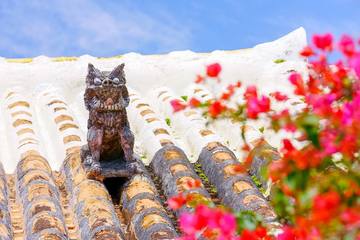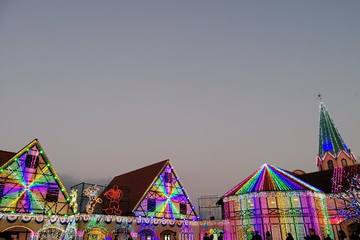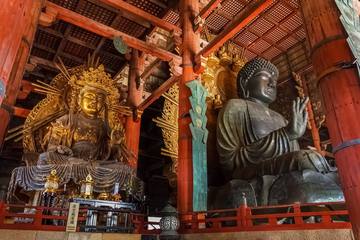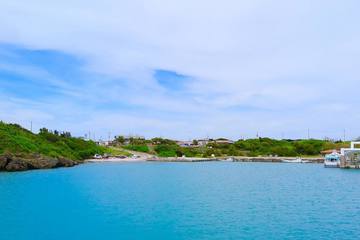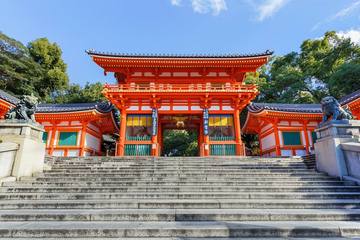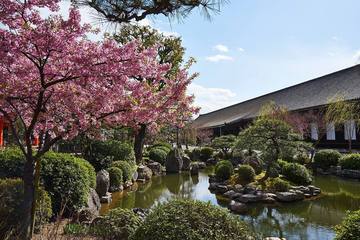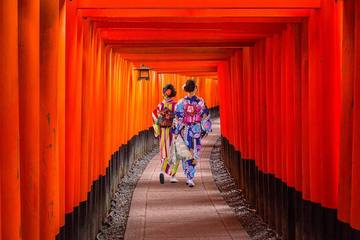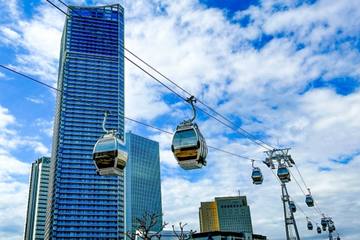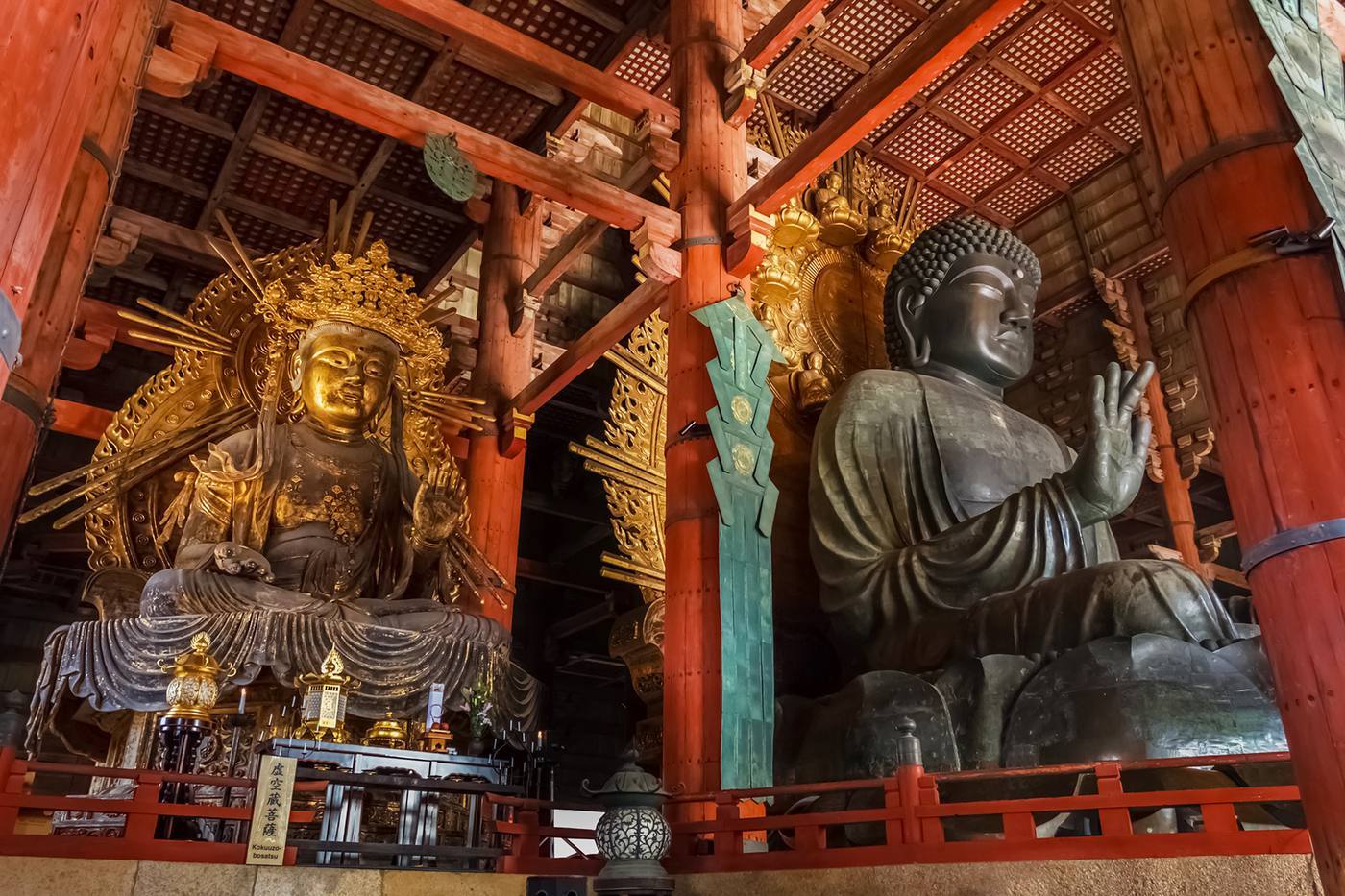
Todai-ji Temple | A Temple with the Great Buddha and Historic Buildings, Representing Nara
When you hear Todai-ji, you might imagine a huge Great Buddha, right? The Great Buddha of Nara is just a part of its charm. Todai-ji, a representative temple from the Nara period that was registered as a UNESCO World Heritage site (Cultural Properties of Ancient Nara), has a lot more to offer than just the giant Buddha.
In this article, we'll not only provide a detailed explanation of the Great Buddha but also introduce other unmissable historical structures.
*This article is translated using ChatGPT.
For the latest information on each tourist spot and facility, we recommend checking the official website.
- 日本 、奈良県
INDEX
Basic Information about Todai-ji Temple
Reason for Constructing the Great Buddha
Admission Fee and Opening Hours
Statues of the Four Heavenly Kings
The Historic Event of Todai-ji: What is "Omizu-tori"?
Recommended Lunch Spots around Todai-ji Temple
For a Japanese-style lunch, consider "Shoka."
Recommended for families and those with children: "Mamejika Shokudo."
Todai-ji: More Than Just the Great Buddha
Basic Information about Todai-ji Temple
Establishment of Todai-ji
During the 7th to 8th centuries, Japan had active international relations centered around the Tang dynasty. This era also saw the revival of Buddhism, with efforts by naturalized monks to spread Buddhism leading to the construction of Buddhist temples across the country, each praying for the security of their respective nations.
In 741 (13th year of the Tenpyo era), Kokubun-ji and Kokubun-ni-ji temples were established, which later became known as Wadai Kinko-ji and are considered the predecessor temples to Todai-ji.
Emperor Shomu adopted the teachings of the "Avatamsaka Sutra" and initiated the construction of the main statue, the Rushana Buddha, and Todai-ji.
Moreover, the culture of the Shomu Emperor's era is referred to as the Tenpyo Culture, and it's said that the unique culture of this period reached its peak at Todai-ji.
Reason for Constructing the Great Buddha
When you visit Todai-ji, the first thing you'll want to see is the Great Buddha.
Known to the Japanese as the "Great Buddha of Nara," its formal name is the "Rushana Buddha Seated Statue." It was completed in April 752 (4th year of the Tenpyo Shoho era), and a grand ceremony called the "Eye-Opening Ceremony of the Great Buddha" was held. Standing at approximately 15 meters (49 feet) tall, it's said to have been constructed with the wish for all living beings, including humans, animals, and plants, to live peacefully together.
While the statue's pose, showing its right palm to the visitors, might be striking, its palm measures about 148 cm (58 inches) in length, and its middle finger is about 108 cm (43 inches) long, showcasing its overwhelming size.
Additionally, if you focus on the head of the Great Buddha, you'll notice small bumps and protrusions. These are called "snail curls" or "rakuhatsu" and represent "wisdom."
Hole in the Pillar
Upon entering the Great Buddha Hall, you'll likely notice a large hole in one of the pillars.
This hole, with a diameter of over 1 meter (3 feet), approximately 37 cm (15 inches) in height, and about 30 cm (12 inches) wide, is the same size as the nostril of the Great Buddha. It's said that passing through this hole brings blessings of good health and success in prayers.
Goshuin (Temple Seal Stamp)
At various locations within the temple grounds, such as the Great Buddha Hall and Niigatsu-do Hall, you can receive goshuin, a stamp and signature from the temple, for a convenient fee of 300 yen.
Todai-ji also offers an original goshuin book, so be sure to check it out.
Access
By Train
From "Nara Station" on the JR Yamato Line or Kintetsu Nara Line, take the city loop bus to "Todai-ji Daibutsuden Kasuga Taisha-mae" bus stop, then it's a 5-minute walk.
From "Nara Station" on the Kintetsu Nara Line, you can also take the Gurutto Bus (Omiya Route or Nara Park Route) to "Daibutsuden-mae Chushajo" bus stop, which is right there, or it's about a 20-minute walk from Kintetsu Nara Station.
By Car
Please use the paid parking lots in the vicinity.
Admission Fee and Opening Hours
For entering the Great Buddha Hall, Hokkedo Hall, Kaidanin, Senju-do Hall, and Todai-ji Museum, there is an admission fee.
- Elementary school students: 300 yen
- Adults (junior high school and above): 600 yen
- Great Buddha Hall: April to October 7:30 AM to 5:30 PM, November to March 8:00 AM to 5:00 PM
- Hokkedo Hall (Sangatsu-do) and Kaidanin Senju-do Hall: 8:30 AM to 4:00 PM
Highlights of Todai-ji Temple
Nandaimon Gate
As you arrive on the side of Todai-ji's Great Buddha Hall where the bus stop is located, you'll notice a prominent gate standing about 25 meters tall at the approach.
The Nandaimon Gate was reconstructed during the Kamakura period alongside the Kongorikishi statues, with towering pillars that project strength towards the sky. It's designated as a National Treasure.
The Kongorikishi statues, placed to the right (Ungyo) and left (Agyo) as you face the gate, are representative works by the sculptors Unkei and Kaikei.
Great Buddha Hall
Although it suffered two separate fires since its founding, it was rebuilt in the 6th year of the Eiho era (1709) and is officially known as the "Golden Hall" or "Kon-do." Inside, as you pass through the gate, you can feel the solemn atmosphere transmitted by the Great Buddha within.
While it was reduced to about two-thirds of its original width during reconstruction, it still stands as one of the world's largest wooden structures and is designated as a National Treasure.
Nigatsu-do Hall
Named after the "Omizu-tori" ceremony held in the second month of the lunar calendar, Nigatsu-do Hall has survived the fires of the Heiji Rebellion in 1180 and the battles of the Miyoshi and Matsunaga in 1567. However, it was lost in flames during the final Omizu-tori ceremony in the 7th year of the Kanbun era (1667). The present structure was rebuilt two years later. It houses two statues of Eleven-faced Kannon, both of which are considered absolutely secret and are never shown to the public.
Moreover, being situated on a high platform to the east of the temple grounds, the stage offers a panoramic view from Nara city to Mt. Ikoma, separated only by the rooftops.
Hokkedo Hall (Sangatsu-do)
Hokkedo Hall, the oldest Buddhist hall within the Todai-ji precincts, is believed to have originated from the Kinshoji temple. It's given its alternate name, Sangatsu-do (March Hall), due to the Hokke-e ceremony held in the third month of the lunar calendar.
Inside, numerous exceptional Buddhist statues are enshrined. One not to miss is the "Fukukensaku Kannon Standing Statue." This statue has vertically open eyes on its forehead, along with three arms on each side in addition to the traditional praying hands in front, giving it a mysterious appearance.
Statues of the Four Heavenly Kings
Enshrined in the Kaidanin Hall are the National Treasure statues of the Four Heavenly Kings.
According to legend, when the monk Jianzhen was repeatedly struck by storms on his journey from China to Japan, the boatman assured him, "Fear not. Four heavenly kings with armor and staffs will appear – two at the bow and two at the mast." This tale is recorded in the "Tang Dynasty Mission to Japan."
Protected by the Four Heavenly Kings, Jianzhen safely reached Japan. For this reason, the Four Heavenly Kings are considered guardians of the Buddhist teachings and continue to be enshrined in the Kaidanin Hall.
The Historic Event of Todai-ji: What is "Omizu-tori"?
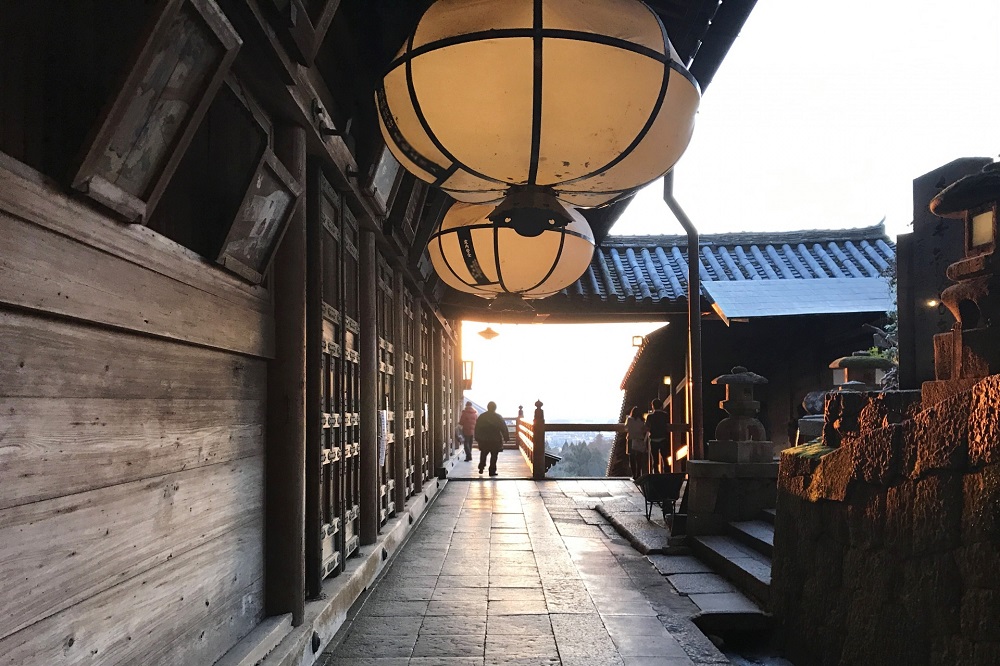
or over 1260 years, without interruption, the tradition of Todai-ji Temple continues with the significant event called "Omizu-tori."
This tradition involves monks visiting the main deity of Nigatsu-do Hall, the Eleven-faced Kannon Bodhisattva, to repent on behalf of people and to pray for the safety of the nation.
Currently, it takes place for two weeks starting from March 1st. Originally, it was held in the second month of the lunar calendar, which is why it's also known as "Shuni-e," meaning the "Second Month Service."
A captivating sight during this event is the young acolytes running around with large torches. There's a belief that when the Shuni-e ceremony concludes, spring arrives in Nara.
Recommended Lunch Spots around Todai-ji Temple
For a Japanese-style lunch, consider "Shoka."
Located just about a 3-minute walk from Todai-ji Temple's Nandaimon Gate, this is a slightly indulgent complex of traditional Japanese experiences.
You can savor colorful handwoven sushi and creative Japanese cuisine at "Hana no Tsuki," enjoy a tea stand named "Koto no Ha," or stop by "Ten no To," which offers tasting sake and a food stall with delicious "oden" (a hot pot dish). Depending on your budget and appetite, take a moment to visit after your Todai-ji visit.
Inspired by three ancient Japanese books, "Man'yoshu," "Fudoki," and "Kojiki," you can enjoy the atmosphere and interior design while indulging in words, history, and the understated beauty of Japan at these eateries.
Experience the sensation of stepping back in time and enjoying a leisurely passage of time.
Recommended for families and those with children: "Mamejika Shokudo."
For families with young children, "Mamejika Shokudo" is around 3 minutes' walk from Todai-ji Temple's Nandaimon Gate.
They offer adorable soft-serve ice cream shaped like deer faces and impactful red torii gate-shaped cookies. There are plenty of sweets that let you experience the taste of Nara in a delightful way.
With its appealing appearance, it's sure to bring smiles to children's faces.
Todai-ji: More Than Just the Great Buddha
It's not only about the "Great Buddha of Nara"; understanding the history of the surrounding halls, statues, and more adds depth to your experience at Todai-ji.
The traditional events that have continued for centuries and the historical buildings have been well-preserved. Even now, you can sense the atmosphere of the past.
On Veltra, there are recommended tours and activities related to Todai-ji. Be sure to check them out!
*Thank you for reading the article!
To improve YOKKA's service, we kindly request your participation in a survey below.
YOKKA


